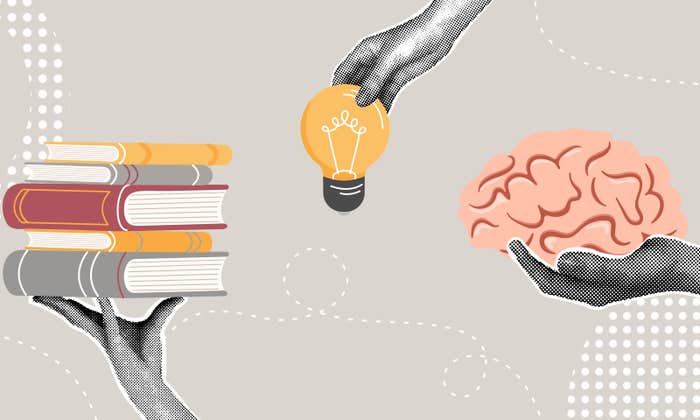As editors our eyes are glued to the page all day, focused on one story, sometimes one tricky passage, and often, when it comes to writing headlines, one word! It’s amazing to look up at the end of the year and see what we’ve produced. We are so happy to have shared with you such wonderful writing and insights. Here are 25 passages that we love on their own, portals into another year of beautiful science in Nautilus.
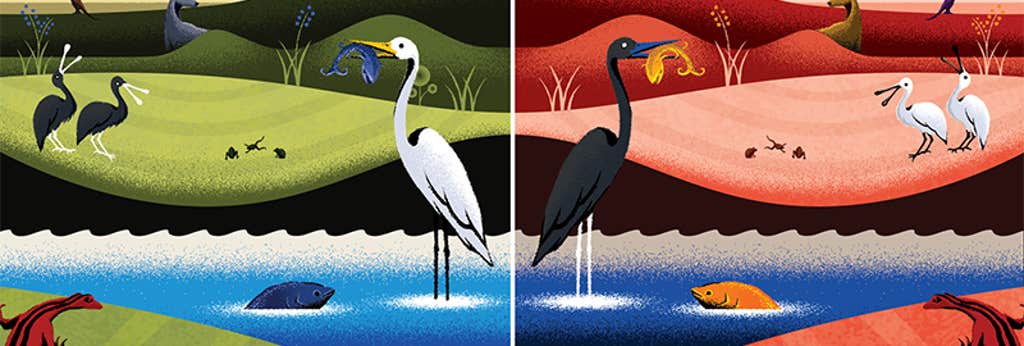
Within the emptiness that dominates the volume of an atom and the volume of the universe, physicists found something. Far from the sedate aether of yore, this something is strong enough to be tearing our universe apart. The void, it turns out, is alive.

It might seem like a paradox to say the artist of the unconscious was deeply engaged in science, where conscious precision rules. Not so. The late Cormac McCarthy’s fiction captures the life force that is the very subject of science. In this exquisite passage from 1979’s Suttree, the narrator, on a “hushed and mazy” Sunday afternoon, lies down on a cot in his houseboat on the river: “The heart beneath the breastbone pumping. The blood on its appointed rounds. Life in small places, narrow crannies. In the leaves, the toad’s pulse. The delicate cellular warfare in a waterdrop.” That is science. And art.


Biochemist Ting Zhu in China has made it his mission to create mirror-image versions of the key molecular ingredients of life. In principle, it might be possible to assemble those components into synthetic cell-like entities that can replicate and metabolize: a kind of primitive form of life, but inverted relative to every known organism, and therefore the first truly non-natural life form.

Stars are highly musical, ringing nonstop in response to the fusion energy pouring out of their cores. When all those good vibrations wriggle to the top, they make the star flicker slightly, by about one part in 1,000. That innate “twinkling” provides outward evidence of the processes generating the waves hundreds of thousands of miles below: sound translated into light.

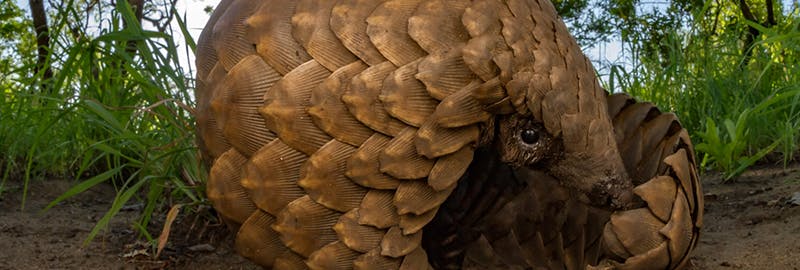
Pangolins are almost entirely harmless. When this bashful animal is frightened, it curls up into a tight ball, the scales offering its first—and, really, only—line of defense. Sadly, it’s that defense mechanism that makes them so susceptible to traffickers. As poachers drive pangolins into the open, the stunned animals roll up and become as compact as a medicine ball, making them easy to scoop up and shove in a sack.

Before our evolutionary ancestors had a brain—before they had any organs—18 different cell types got together to make a sea sponge. Remarkably, some of these cells had many of the genes needed to make a brain, even though the sponge has neither neurons nor a brain.

Thanks to Einstein, we know one thing about consciousness: It’s inside your head. If you’re in Dallas wearing a hat, your consciousness is in Dallas, under your hat. Einstein’s theory of relativity shows that qualia, the elements of subjective experience, must be in the same place as their neural correlates, the brain events constituting or immediately causing them.

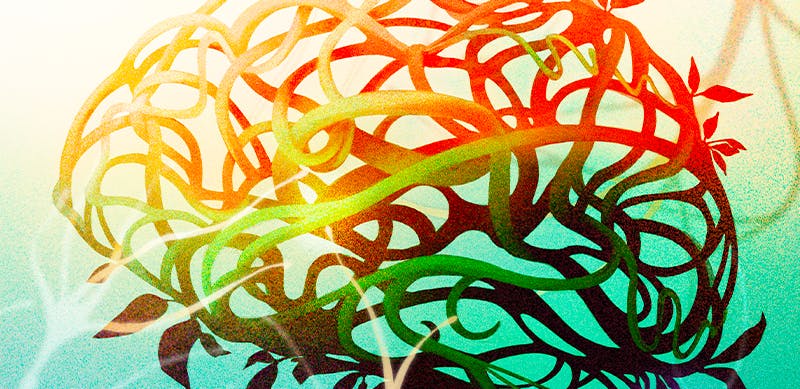
Plants’ abilities to sense and respond to their surroundings lead to what seems like intelligent behavior. Their roots can avoid obstacles. They can distinguish self from non-self, stranger from kin. If a plant finds itself in a crowd, it will invest resources in vertical growth to remain in light; if nutrients are on the decline, it will opt for root expansion instead. Leaves munched on by insects send electrochemical signals to warn the rest of the foliage, and they’re quicker to react to threats if they’ve encountered them in the past. For plants, we say, it’s biochemistry, just physiology and brute mechanics—as if that’s not true for us, too.

Gravitational waves—ripples in the fabric of spacetime itself—can be created when accelerating masses, such as pairs of black holes, begin to merge. As these gravitational waves plow through the universe, they stretch and squeeze all the fabric of spacetime itself, causing everything to oscillate like a pair of swing dancers as they pass through, onto their next partner.

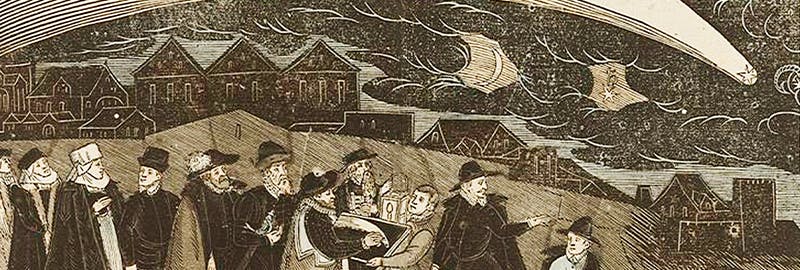
We had the tools to limit the spread of the coronavirus, but we didn’t. It wasn’t because of a comet’s malign influence, as might have been said 500 years ago. It was because we couldn’t agree on the story. Scientists, physicians, and public health officials had one story, painstakingly cultivated, and developed over time. Too many people in power told a different story, to deflect responsibility for the crisis. Millions of people, meanwhile, fell prey to the cognitive trap that led people in the past to blame comets for the calamities of their times—to project a story onto the natural world, to provide a sense of control when everything around them seemed out of control.

After centuries in repose, volcanoes may reawaken, clear their throats, let off steam, and, if provoked, explode. As in human fits of rage, a volcano’s violent outburst is often self-amplifying: Their response to a small disturbance can feed on itself, spiraling into a tantrum.

People have been thinking about “garbage patches” all wrong. These regions of the ocean are not impoverished spaces. They’re ecosystems. Ecosystems that we’ve clumsily named after something we did to them—“garbage patches”—rather than what they may actually be.

In a parallel reality where most of us live, Harry had been diagnosed with psychotic delusions, many of them seemingly borrowed from the YouTube videos he obsessively watched. His family convinced him to visit a mental health clinic. There, he enthused to his clinician that he was “the happiest man in the world.”


Consider the dragonfly, zigging and zagging over a lake in summer like a runaway rainbow, seeming to defy gravity and logic. How can such delicate wings carry aloft that long body at such great velocities? They generate aerodynamic force equal to over four times their own body weight. Dragonflies are so adept at flying that some researchers have begun studying them to help design tiny aircraft that can monitor hazardous environments remotely.

Ceres, along with the other dark asteroids, was born in the solar system’s outer rim long after planet formation was underway. It stayed colder than most other planetesimals, remaining water-rich and porous, and stayed home. But the dynamical shakeup from the giant planet instability was too much, and it was—luckily for exploration-obsessed primates—pulled toward the sun. Unlike most of its brethren, which were ejected into interstellar space, Ceres was trapped by a trick of orbital mechanics and stranded in the outskirts of the asteroid belt, shining darkly for the last 4.5 billion years unseen, until an Italian priest spotted it in 1801.

Some orchids have evolved to mimic the mate of their preferred pollinator, or their favorite snack through looks, scent, and the release of special chemicals. Unknowing insects show up on their flower crown hoping to get lucky, and get duped into picking up the flower’s pollen instead.


For Nikola Tesla, nerves in the brain had to work by the principle of resonance, which meant thoughts were things we could all tune into, given the right device. He thought he could create a technology that would allow everyone around the globe to resonate with one another. We no longer think of our brains as wireless telegraphs or thoughts as things that can be transmitted by brain waves; now we think of brains as computers and thoughts as things that can be uploaded to the cloud.

Mother Nature hasn’t given common frogs, Rana temporaria, much time for courtship. Just a few days in the spring—so competition is fierce. Several males often cling to one female, forming “mating balls” in the water, which can drown the female. So females employ a few clever tactics to throw off the unwanted suitors, including feigning death—stiffening with arms and legs outstretched from the body, sometimes for hours.
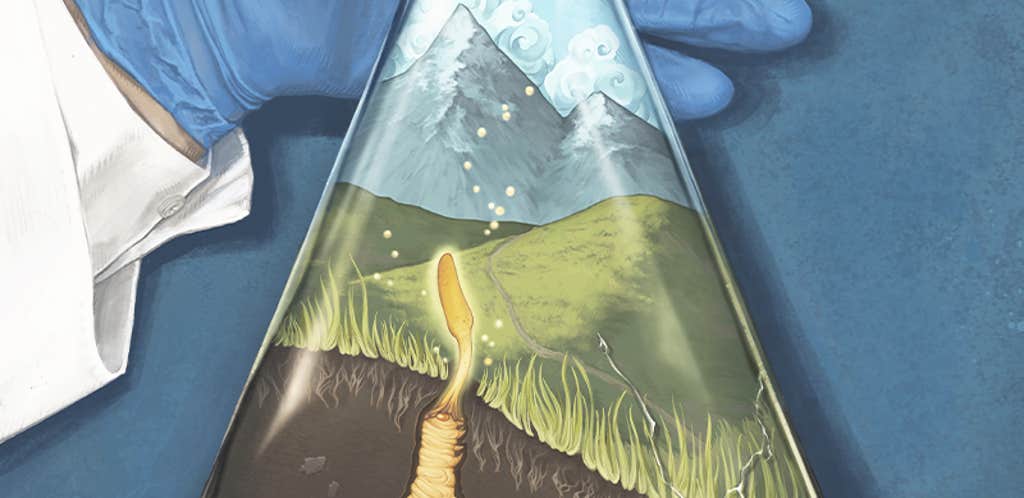

This parasitic fungus took over the bug’s body and commandeered its brain, maneuvering the caterpillar into the perfect place, just below the surface of the soil, before consuming it from the inside. At just the right time in the spring, the fungus blasted a stroma out of the caterpillar’s head and up from the soil.

Is climate change an existential risk? Of course, that’s a silly question to ask. It depends on a whole bunch of other outside factors. Three degrees of warming in a world marked by equality, trust in public institutions, good adaptive technology and governance, and multilateral cooperation, we could navigate that. Three degrees of warming in a world marked by multilateral conflict, war, dangerous new technologies, polarization, and inequality—that becomes a much more calamitous prospect.

“The sciences tend to think of themselves as something as far away as possible from religion, as having freed themselves from God,” says Mary-Jane Rubenstein, a professor of religion and science in society. “But in the process, they tend to generate big stories, big mythologies, about the origins and the ends of the world. And conjure characters who are heroes, gods, and monsters. A couple centuries ago, we would have called that religion.”


The way Robert Sapolsky sees it, you can’t escape the biological and cultural forces and environmental factors that preceded you and shaped you. “There’s not a crack anywhere in there to shoehorn in free will,” he said. “When you look at every contemporary argument for free will that’s not invoking God or fairy dust or something, at some point, one must assume a step that bypasses the antecedent causes. But that violates the laws of how neurons work, atoms work, and universes work. Your life is nothing but that: everything that came before.”

In the vast, bleak, windswept surface of our planet’s polar seas, buried within drifting slabs of sea ice, life is indeed not only present, but multitudinous. Bacteria, archaea, fungi, algae, viruses. All making their way in the otherworldly environment of polar sea ice, swimming in brine pockets, gobbling up carbon, feeding the food web in the depths below.


Anyone can have a hero’s journey if you think about your life in a new way.

Once we let go of the comforting fiction that all this complexity is orchestrated by some master plan in the genetic sequence in our chromosomes, as if simply reading out a recipe, then we have to wonder where the organization comes from. For complex organisms like us, control is decentralized and distributed across many levels, each of them largely insulated from the finer details of what happens on the levels below. It’s simply bewildering that insensate matter—atoms and molecules, the same stuff from which rocks and air and stars are made—can do this. It is our remarkable good fortune to inhabit such a creative, generative universe, able for a time to spin up little centers of organization that awaken to their own existence. ![]()
Lead collage by Tasnuva Elahi and others as noted above



























